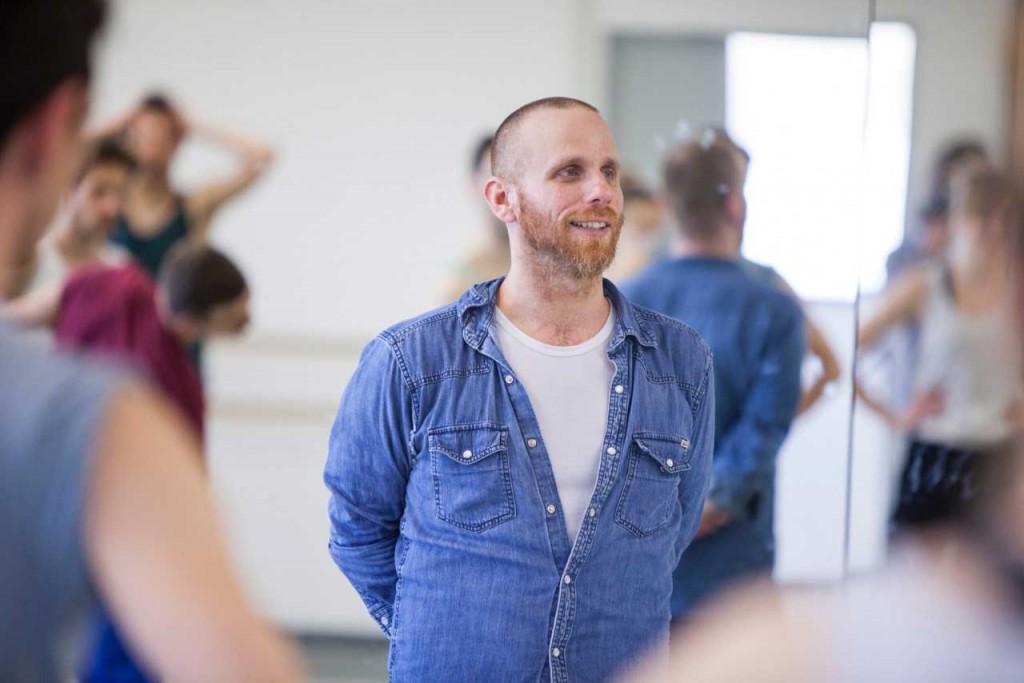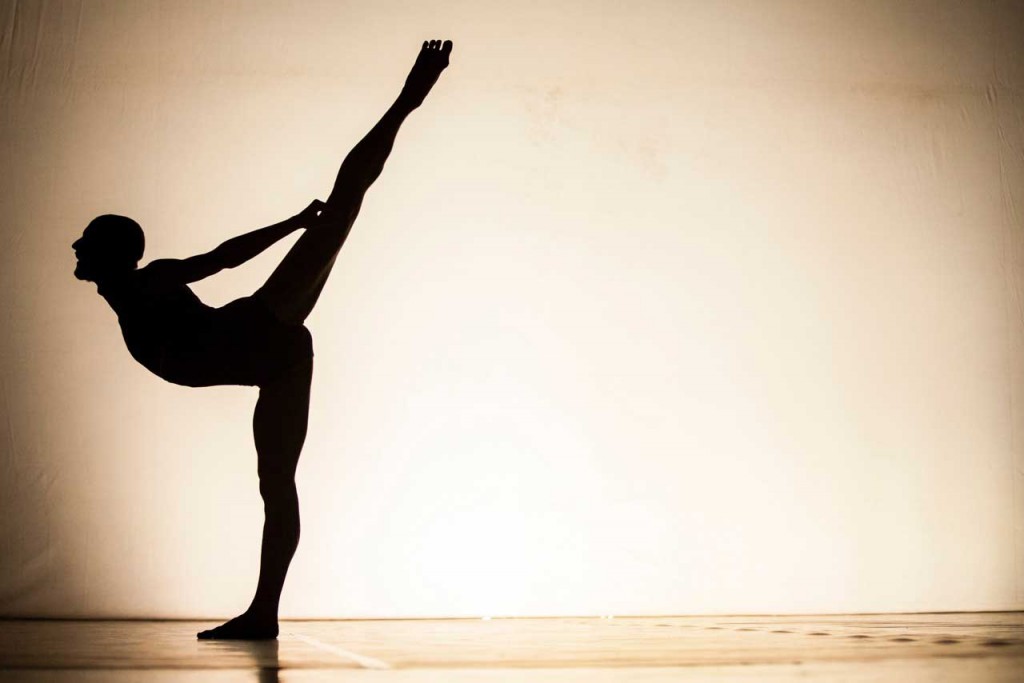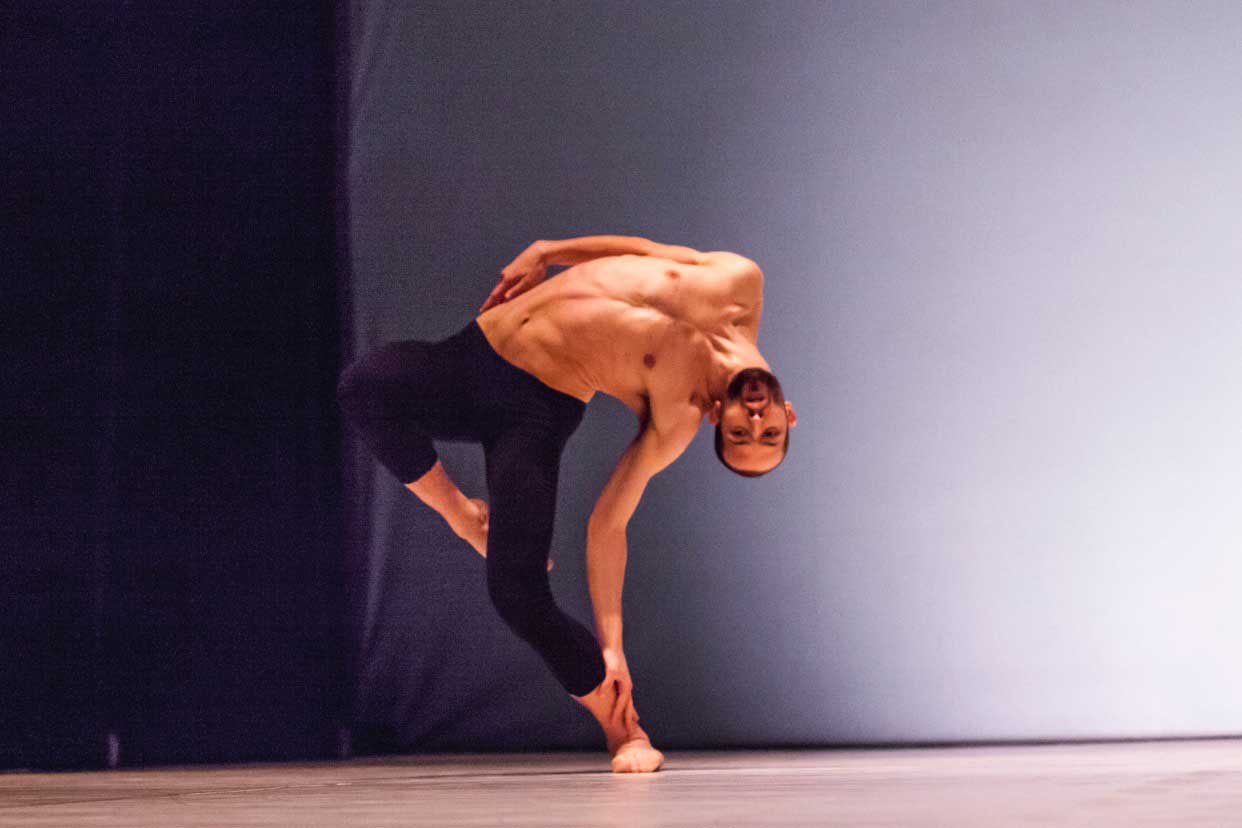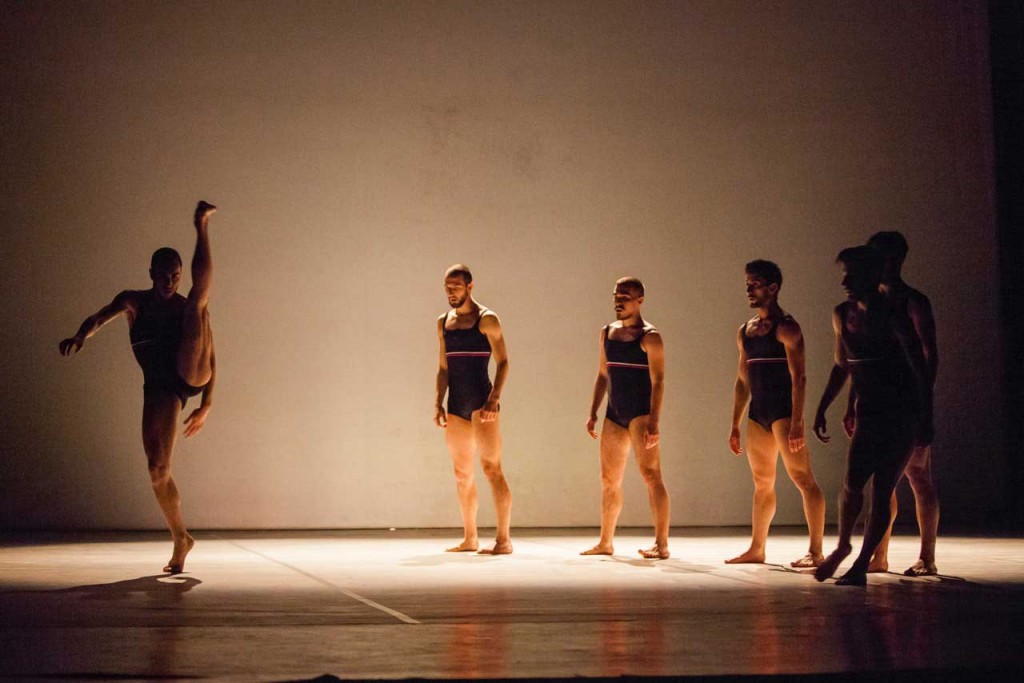 The new production “Paradox” received a great welcome from Belgrade Dance Festival audience. Composed of three choreographies, it investigates the theme of “gender”, and Itamar Serussi created two pieces for it, for the male point of view. But is there a difference in choreographing for male or female dancers? What do they work on, in the studio? And what’s the essence, in a dance piece? Only Itamar can answer these questions…
The new production “Paradox” received a great welcome from Belgrade Dance Festival audience. Composed of three choreographies, it investigates the theme of “gender”, and Itamar Serussi created two pieces for it, for the male point of view. But is there a difference in choreographing for male or female dancers? What do they work on, in the studio? And what’s the essence, in a dance piece? Only Itamar can answer these questions…
How did you start your research about “gender” for Paradox?
I think the research started before the creative process of Tefer. In some ways it has something to do with my curiosity: I used to work mainly with women before it, and this is the second work I create for an all-men cast. It was not only a gender issue, I think, I was especially trying to find male dancers who could dance my choreographies in a certain way.
 Does the vocabulary of your dance change when you’re choreographing for male dancers?
Does the vocabulary of your dance change when you’re choreographing for male dancers?
No, I don’t think so. Because the choreography comes from a lot of inputs from me, so the gender is not the issue, it is all about how they interpret the essence, the idea, the material… But it has always been a curiosity for me to see the works I did for female dancers done by male dancers. Working with different genders is always interesting: maybe using the idea of male and female as they are the same body might be useful, and can be – if not provocative – funny. In the choreographies we can see male bodies became female, and we can see them being silly about it, joking about audience stereotypes, about some anecdotes, some highlights of relationships and situations…
Since you mentioned the word “essence”: what’s the essence of the solo Sycho?
The title comes from a misspelling: I thought the dancer’s name was Sycho, not Siro! A mistake due to his interpretation of the physicality of my works, too: he was strongly connected to my choreography since the beginning and he was interested in getting more information from me. He worked with me outside Balletto di Roma, but a lot of images for Sycho came from the work in the studio, from the loop, from my personal life situations: from what I am busy with, or dealing with at the present. So I have different ways of outputting all these things: not always straightforward, but underlining them through energy and gestures. In Sycho there’s a lot of loneliness, search, frustration, love…

Universally connecting words…what about Tefer?
It comes from pure movement, that was the first thing I researched about. There is a bit of Japanese flavour in it too, a reference to Mr. Line cartoon, a cartoon from the Seventies with weird sounds, that I asked Richard (Richard van Kruysdijk, the composer he works with) to find. Coming into a ballet-oriented company is something interesting: my style was something different, so the work was a human approach too…
I am a dancer! I am using my body to communicate. Because language sometimes loses details, articulations, specificities. It is part of the process for me to articulate more and be precise in the studio, and sometimes I need to experience a movement myself, to demonstrate it and to dance with the dancers. It is really helping me, this is how I work many times in fact, because it gives to the dancers more info about how to use the body, and how to develop material I gave to them, how to use the space, the body, exploring them through exercises…in the rehearsals studio I really can see a progression of the work.

